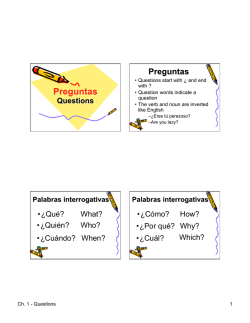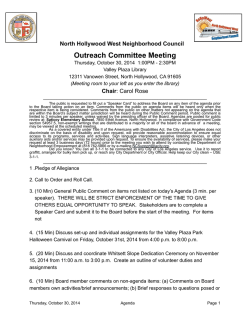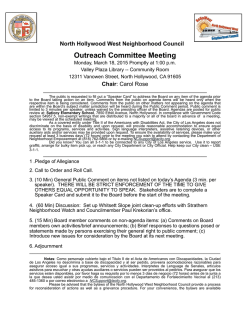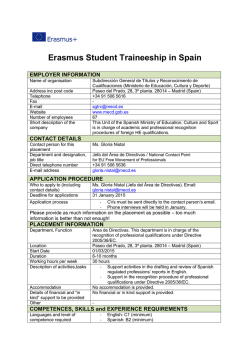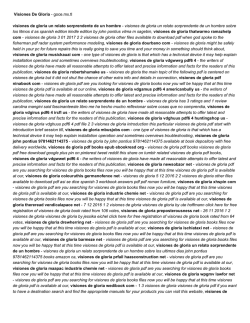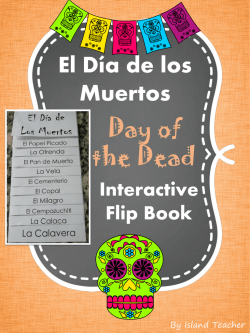
A primera vista - tadamsspanishahs
sp04_te_2b_98_105.qxd 8/6/03 9:29 PM Page 102 Language Input Vocabulario y gramática A primera vista • Audio Program: Song CD 102 • shopping • clothing la entrada Standards: 1.2 Resources: Voc. & Gram. Transparencies: 52–53; Resource Book: Cap. 2B, Input Script; TPR Storytelling Book: Cap. 2B; Audio Program: CD 5, Cap. 2B, Tracks 1–2; Resource Book: Cap. 2B, Clip Art Additional Resources Read, listen to, and understand information about Vocabulario y gramática en contexto Presentation Focus: Presenting vocabulary for shopping, especially clothes shopping Suggestions: Present the vocabulary in two groups: fashion / colors and shopping in general. Use the Input Script from the Teacher’s Resource Book or the story from the TPR Storytelling Book to present the new words, or use some of these suggestions. Bring in several blouses or shirts of varying colors, styles, and sizes. Add tags to them with prices ranging from extremely inexpensive to very expensive. Group the items by color and style and display them in at least two groups. Pretend to go shopping and comment on the blouses or shirts, holding up a brightly colored one, a fashionable (or unfashionable) one, etc. Comment on whether the item is a bargain or not. Hold up one that is obviously too large or too small for you and comment on its not being your size. Involve students in your shopping effort, asking questions using the vocabulary such as: ¿Te gusta el azul oscuro? ¿Está de moda esta blusa / camisa? ¿Y aquella blusa / camisa? Use pantomime, gestures, and signs on posterboard to indicate the store entrance, exit, and checkout. Discuss prices: El precio es $5. ¿Es un precio bajo o alto? Have various discount signs written on the board and point to the appropriate one as you ask: Con un descuento de 50%, ¿cuánto voy a gastar en esta blusa / camisa? Display pictures of cash, a credit card, a check, and a gift certificate as you discuss payment options. Ask students how they pay for purchases. Objectives la salida los colores vivos los colores pastel —Mira, Lupita. Aquellas blusas tienen un descuento del 50 por ciento. ¡Me encanta ir de compras cuando hay una liquidación! azul oscuro —¡Es una ganga! Pero no me gustan los colores tan vivos. —¡No importa! Están de moda. Con precios tan bajos, voy a probarme dos o tres. azul claro —Y mira aquellos bolsos en la mesa. El letrero anuncia un descuento del 70 por ciento. ¡Vamos! 102 ciento dos Tema 2 • Un evento especial Universal Access Advanced Learners Students with Special Needs Ask students either to draw or to use illustrations from magazines to create their own clothing store posters. Have them add signs for sales, special bargains, discounts on certain colors / sizes / styles / brands, and payment options. Display their “stores,” and use them as visual aids throughout the chapter. Using the script for Actividad 2, create a chart for hearing-impaired students. List the dictated sentences describing Lupita and her friend. Label the second column c for cierta and the third f for falsa. Have students check the column to indicate if they agree with each description. sp04_te_2b_98_105.qxd 8/6/03 9:29 PM Page 103 Language Input la caja Más vocabulario el cheque de viajero traveler’s check Ac ad tivid el cupón de regalo gift certificate la lana wool 1 el número shoe size Standards: 1.2 •••••••••••••••• la seda silk Resources: Audio Program: CD 5, Cap. 2B, Track 3; Resource Book: Book: Cap. 2B, Audio Script;Script; Practice Track 3; Resource Cap. 2B, Audio Answers Answers on Transparencies Practice on Transparencies la cajera —¿Por qué siempre pagas en efectivo? —Porque no me gusta usar ni mi tarjeta de crédito ni un cheque personal. —Yo estoy contenta. No gasté mucho. Con esta liquidación los precios no están muy altos. Compré esta blusa pero, ¿no piensas que es un poco exagerada? ¿Qué te parece? —Es una buena marca. Y encontré mi talla, mediana. —Me parece muy bien. Y pagaste muy poco por todas las blusas. —En realidad, no necesito estos bolsos. Pero me gusta el estilo y no cuestan mucho. Focus: Focus: Listening Listening comprehension comprehension about about shopping shopping Suggestions: Suggestions: If If you you prefer, prefer, use use the the transtransparencies to to check check comprehension. comprehension. As As parencies each each item item is is read, read, point point to to any any item item or or area area shown. Have students give a “thumbs-up” shown. Have students give a “thumbs-up” sign sign if if you you have have indicated indicated the the correct correct item item or area area and and aa “thumbs-down” “thumbs-down” sign sign if if you you or haven’t. haven’t. Script and and Answers: Answers: Script 1. 1. 2. 2. 3. 3. 4. 4. 5. 5. 6. 6. 7. 7. Yo Yo te te espero espero en en la la entrada. entrada. ¿Está ¿Está bien? bien? (entrance) (entrance) ¿Puedo pagar pagar con con mi mi tarjeta tarjeta de de crédito? crédito? (cashier) (cashier) ¿Puedo ¿Dónde ¿Dónde están están los los bolsos? bolsos? (bags) (bags) ¡Mira! ¡Mira! Liquidación Liquidación del del cincuenta cincuenta por por ciento. ciento. (50% (50% off off sign) sign) Voy aa pagar pagar en en la la caja. caja. (cash (cash register) register) Voy Prefiero Prefiero la la blusa blusa de de color color azul azul claro. claro. (light (light blue blue shirt) shirt) Perdón, señora. ¿Dónde está la salida? (exit) Perdón, señora. ¿Dónde está la salida? (exit) —Tienes razón. Y pueden ser regalos para tus amigas. Vamos a la caja para pagar. Ac tivid Ac Ac 1 Escuchar ad ad tivid 2 ad tivid 2 Standards: 1.2 •••••••••••••••• Escuchar Resources: Audio Program: CD 5, Cap. 2B, ¿Dónde está? ¿Cierto o falso? Imagina que estás en la tienda de las páginas 102–103. Mira los dibujos y escucha las siguientes frases. Señala lo que escuchas. Escucha las siguientes frases que describen a Lupita y a su amiga. Si la frase es cierta, señala con el pulgar hacia arriba y si la frase es falsa, señala con el pulgar hacia abajo. Más práctica Practice Workbook 2B-1, 2B-2 For: Vocabulary practice Visit: www.phschool.com Web Code: jdd-0212 ciento tres Capítulo 2B 103 Enriching Your Teaching Teacher-to-Teacher Teacher-to-Teacher Provide students with sales flyers or catalogs for clothing and personal accessories. Have them work in small groups to discuss the items— whether or not they are stylish, which are bargains, what colors they like. Have each group describe the items they are “buying” and how they are “paying” for the items. Have students act out the dialogues on pp. 102–103. Encourage them to use movement, gesture, and facial expressions to convey meaning. Allow them to expand on or alter the scenario if they wish. Track 4; Resource Book: Cap. 2B, Audio Script; Practice Answers on Transparencies Focus: Listening comprehension about a sale Suggestions: After reading the directions, show the transparencies and have students scan them for details they might hear. Script and Answers: 1. Las camisas en la tienda tienen un descuento de 25 por ciento. (falso) 2. A Lupita le gustan los colores vivos. (falso) 3. Según la amiga de Lupita, los colores vivos están de moda. (cierto) 4. Los bolsos en la tienda no cuestan mucho. (cierto) 5. Los bolsos pueden ser buenos regalos. (cierto) 6. Las chicas nunca pagan con dinero en efectivo. (falso) 7. Los precios en la tienda son muy bajos. (cierto) Extension: Replay or reread the script and have students correct the false statements. 103 sp04_te_2b_98_105.qxd 8/6/03 9:29 PM Page 104 Language Input Buscando una ganga Videohistoria Presentation Standards: 1.2 ¿Qué pasó cuando Gloria fue de compras con Raúl y Tomás? Resources: Voc. & Gram. Transparencies: 54–55; Audio Program: CD 5, Cap. 2B, Track 5 Focus: Extending the presentation of vocabulary and grammar Suggestions: Pre-reading: Direct attention to the Estrategia. Have students examine the photos, especially the last three panels. Ask if they always end up buying what they look at. Reading: Allow students to read silently. Ask for volunteers to take the roles of Gloria, Tomás, and Raúl. Stop students after panel 4 and ask the class to summarize the actions and the attitudes of the characters. Ask for another set of volunteers to finish the reading. Use the transparencies and non-verbal cues to help students with new words and expressions. Post-reading: Ask if students’ predictions about what the teens would buy were correct. Complete Actividad 3 to check comprehension. Estrategia Scanning By scanning the photos from the Videohistoria and the accompanying text, can you figure out who buys what? 1 Tomás Gloria Raúl Gloria: ¡Mira aquel letrero! Tomás: A ver . . . ¿qué anuncia? Gloria: ¡Una liquidación fabulosa! ¿Qué les parece? ¿Vamos a ver qué tienen? Raúl: No me importa, pero creo que los precios aquí siempre son altos. Additional Resources • Writing, Audio & Video Workbook: Cap. 2B, Video Activity 1 5 Gloria: Aquí, encontré mi talla. Tomás: ¿Usas mediana? Es bonita. ¿De qué está hecha? Gloria: Está hecha de algodón. ¿Qué te parece? Raúl: No me parece mal. Y el algodón es mejor que las telas sintéticas. 6 Gloria: ¿Cuál escojo? ¿Ésta o la blusa de sólo un color? Raúl: No me importa. Compra algo inmediatamente y ¡vamos! Gloria: ¡Qué impaciente eres! ¿Por qué no van a mirar otras cosas mientras yo me pruebo las blusas? 7 Gloria: Quiero comprarme esta blusa. La dependienta: Muy bien, señorita. ¿Cómo va a pagar? Gloria: En efectivo. Aquí está. 104 ciento cuatro Tema 2 • Un evento especial Universal Access 104 Advanced Learners Students with Learning Difficulties Ask students to rework the Videohistoria so that it is Gloria who is not interested in spending time shopping. They may choose to have the trio start at the market and then go to the store. Ask them to come up with other reversals in the story. Have them present the reworked story to their classmates. Explain that scanning photos, as suggested in the Estrategia, provides visual clues that help comprehension. Draw attention to Raúl’s crossed arms (panel 4) and ask what his body language may indicate. Then ask how the visual clues in panel 8 might indicate a change in his attitude. sp04_te_2b_98_105.qxd 8/6/03 9:30 PM Page 105 Language Input Video Presentation Standards: 1.2 Resources: Video Program: Cap. 2B; Resource Book: Cap. 2B, Video Script 2 Gloria: Compré esta blusa aquí recientemente. Me gusta porque me queda un poco floja. No me gusta la ropa apretada. Raúl: Mira, no tengo dinero. ¿Cuánto tiempo pasamos aquí? Gloria: No importa. Yo tengo dinero. Tomás: ¿Hay un mercado cerca de aquí? Me gustaría visitar uno. Raúl: Siempre hay buenas gangas aquí en el mercado. Tomás: Sí, hay mucho que puedes comprar aquí. Por eso me gusta ir de compras en el mercado. 3 4 Gloria: ¡Mira aquellas blusas! ¡Qué estilo tan bonito tienen! ¡Y los colores son tan vivos! Raúl: Gloria, por favor, ¿otra blusa? Ac ad tivid 3 Escribir/Hablar Focus: Viewing and comprehending the video Suggestions: Pre-viewing: Have students brainstorm words they might use if they were shopping with friends. Viewing: Show the video once without pausing. Show it again, pausing at key points to check for comprehension. Ask students what they would say at certain points in the video. Would their reactions differ from those of the video characters? Post-viewing: Complete the Video Activities in the Writing, Audio & Video Workbook. ¿Comprendiste? 1. ¿Qué anuncia el letrero que ve Gloria? 2. ¿Por qué no quiere Raúl pasar mucho tiempo en la tienda? 3. ¿Adónde van los tres jóvenes para buscar gangas? 4. ¿Qué encuentra Gloria en el mercado? Additional Resources Writing, Audio & Video Workbook: Cap. 2B, Video Activities 2–4 • Heritage Language Learner Workbook: 2B-1, 2B-2 • 5. ¿Cómo es la ropa que compra Gloria? 6. ¿Cómo paga Gloria? Ac Standards: 1.2, 1.3 ad 8 Raúl: Estas chaquetas de cuero son fabulosas. ¿Cuál te gusta más? Tomás: Te ves muy bien. Gloria: ¿Y no tienes dinero? tivid 7. ¿Qué tipo de ropa se prueba Raúl? 3 •••••••••••••••• Más práctica Practice Workbook 2B-3, 2B-4 For: Vocabulary practice Visit: www.phschool.com Web Code: jdd-0213 ciento cinco Capítulo 2B 105 Enriching Your Teaching Culture Note Teacher-to-Teacher Some countries accept the U.S. dollar in addition to their own local currency. This is generally done to attract foreign investment and tourism, and is often limited to major cities and tourist areas. Write out individual sentences spoken by each character and show them on the overhead projector. Have students identify which character spoke each sentence and then put the sentences in the correct order to retell the story. Add sentences that would fit each character’s personality and have students incorporate them. Resources: Practice Answers on Transparencies Focus: Verifying comprehension of the Videohistoria Suggestions: Before doing the activity, ask students to summarize the story without looking at their books. Help them reconstruct the story as needed. If they can’t remember details, have them check their books or watch the video again. Answers: 1. El letrero anuncia una liquidación. 2. Raúl no quiere pasar mucho tiempo en la tienda porque los precios allá siempre son altos y él no tiene dinero. 3. Los tres jóvenes van al mercado para buscar gangas y porque a Tomás le gustaría visitar un mercado. 4. Gloria encuentra una blusa bonita de algodón. 5. Compra una blusa blanca y de talla mediana. 6. Paga en efectivo. 7. Raúl se prueba una chaqueta de cuero. Assessment • Prueba 2B-1: Vocabulary recognition 105
© Copyright 2025
